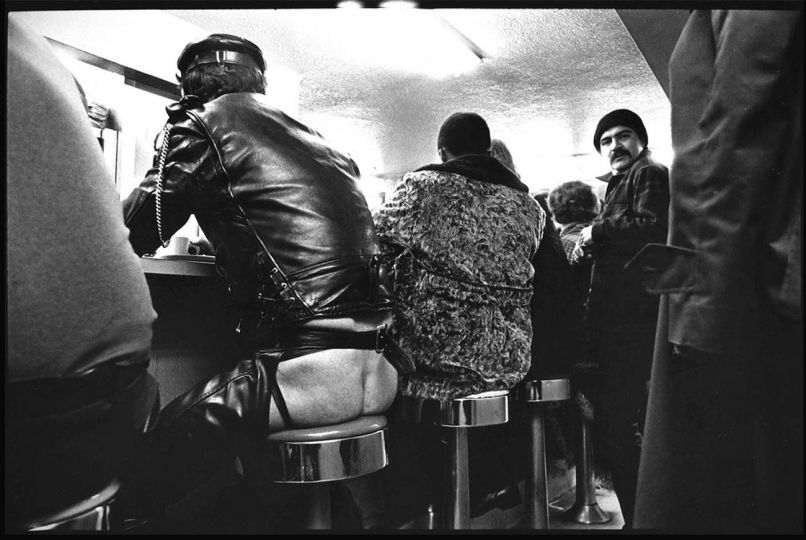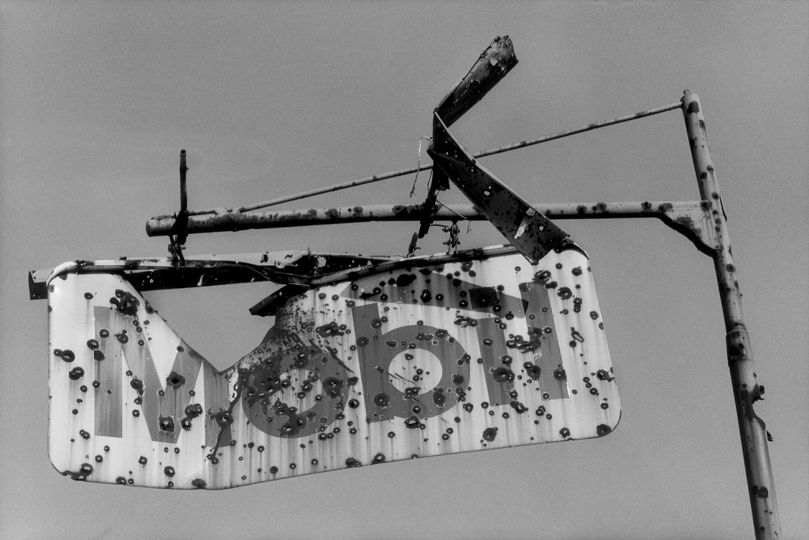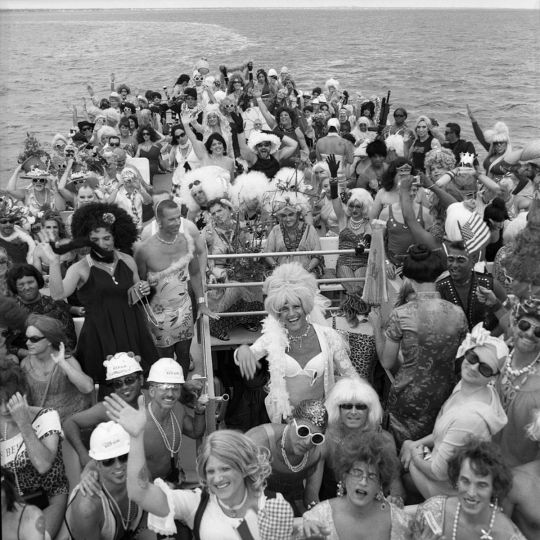The Art Director of this third edition of Photoquai was entrusted to a photographer It is the first time, what was your intention?
Stéphane Martin : As a photographer, Françoise Huguier has followed her own path . From the journey, Dakar- Djibouti openedby Michel Leiris, ,the intimacy in the bedroom of the Mali and Burkina women (Secrètes, with an introduction by Claire Denis) ,to the russian communal apartments (Kommunalka, photographic series realized between 2007-2009 coupled with a documentary film.
In each step of her research there is always curiosity for the evolution of the world society, and a real taste to share the life of her models. her work shaped her field experience. And made her
a contemporary anthropologist her point of view is very interesting for Photoquai and for the museum of Quai Branly.
Françoise Huguier is known for her spirit of inquiry and for her journeys in very different areas Japan, South East Asia,Africa ,Siberia and today Colombia. Did this play in her designation?
Stéphane Martin : Françoise Huguier is a traveller that willingly takes roots in non western countries were she works. In Bamako Mali she founded the biennale of African photography in 1994. In Singapore (where she was in residency 2009 ,she worked on « don’t move » were she explores the untypical real estates offer of the government of Singapore.
In Cambodia (she went back in her childhood footsteps j’avais huit ans 1995). In Siberia (a six month reportage in 1993, En route pour Behring, various anchoring in very different cultural and social realities gives her the right to direct Photoquai. She knows to avoid cliches and has developed a professional net (photographers, collectors, curators) that feed this 2011 edition.
Do you think that it is more difficult for a photographer to judge others ?
Stéphane Martin : No on the contrary it must be easier, if only for her perfect knowledge of the technical aspects of the shooting, that helps her detect, the world , the formal choice and the risk taking.
A photographer can define the view of the world far and near that surround him or her. Photoquai is not a contest and Françoise did need to judge her peers she herself lives it as a continuity when she cites Heinrich Wölfflin « to see other wise is to see something else ».
Her selection of nonwestern photographers is a proposition of this other side of the world, anchored in cultural and artistic roots different from ours. Photoquai assumes the view of a person at a given time not worrying about being comprehensive in a photographic genre or geographical representation.
Are you satisfied with the research procedure and of the selection ?
Stéphane Martin : Yes very much so but the concept is fragile. Françoise Hughier and her predecessors had to ensure that the curators lived and worked in the country of the selected photographers; It is a gold digger job that cannot be done from afar or via internet.
What have been your revelations in the selection ?
Stéphane Martin : Globally I am happy that this year Photoquai had a chance to develop the elements of context for each of the exhibited photographers, their condition of creation,, their technical choices, their fights and their influences. One can be surprised by a picture , by conditions of production ,by a story which might be personal or national that underline the creation of an image or series to which it belongs.
Some example :
The quality of the asian selection that mix the pop culture of consumer society Taiwan = SHEN CHAO LIANG, and the expression of personal frailty Japan series on self mutilation of KOSUKE OKAHARA
The wealth of the South East Asia selection that present this year about 15 photographers artists from Singapore CHARLES LIM and EDWIN KOO ,work on the memory of the Cambodian HAK KIM also candidate of the grant ( bourse d’aide à la création ) of the museum of Quai Branly.
Originality of the Indian selection that subtly makes fun of photo studio portraits with MOHAN VERMA and his faceless portraits. MAHESH SHANTARAM and his series Matrimania or the hindi photo fiction of SHAILABH RAWAT the selection was made with the curator OLIVIER CULMANN himself a photographer of the cooperative TENDANCE FLOUE Entry of Tanzania in Photoquai with two photographers SAMEER KERMALI who micro photographed a safari of ants and MWANZO MILLINGA who portraits albino children. The disenchanted urban environment of the BAHREINI photographer CAMILLE ZAKHARIA and her series on shacks on the coast of Bahrein.
Do you wish a more important appearance of some other areas of this world?
Stéphane Martin : No the geographical exhaustivity is not a question for Photoquai, each edition can displace the cursor toward a special zone or country as is the case this year with South East Asia or Russia .
In 2009 the selection presented by the Iranian gallery director ANAHITA GHABAIAN ETTHADIEH was strongly anchored in the near and middle east, less represented this year with only Bahrein and Iraq.
Do you think it would be important today to introduce in the presented selection animated images , and video which is very dynamic ?
Stéphane Martin : Artistic , documentary videos or movies have their space in the museum of Quai Branly but not necessarily within Photoquai that remain a photo biennale.
Does the Museum of Quai Branly articulate its photographic collection around the authors presented by Photoquai ?
Stéphane Martin : The articulation is thought in terms of complementarity. On the one hand Photoquai presents emerging non western artists relatively unknown on an international level to whom the museum offers a first class visibility during two month. On the other hand the acquisitions of the museum are targeted towards well known artists that stands as references in the world of photography (Guy Tillim, Samuel Fosso, Michael Parekowhai,Fiona Pardington,Greg Semu, Lourdes Grobet).
Since the creation of the biennale prints from three photographers went into the museum collections :
ANNE NOBLE, New Zealand , acquisition in 2007 of 12 prints from the series Ruby’s Room (1998-2006)
SHOKOUFEH ALIDOUSTI , Iran, 5 prints from the series Self Portraits (2001) AYIN, Inner Mongolia 15 prints from the series Nomads from Chinese Mongolia (2005-2008).
The photographers discovered in the framework of Photoquai can apply to « projets de creation artistique » grant set up by the museum to help artistic creation since 2008, with the support of the endowment of Total. Every year three candidates are are picked for a year residency. At the end of the residency ten signed prints numbered 1/10 are selected they integrates the collection of the Museum of Quai Branly
Five award winners of this program came from Photoquai
2011 ANDREW ESIEBO ( Nigeria) and HAK KIM ( Cambodia presented in Photoquai 2011)
2010 FIONNA PARDINGTON (New Zealand presented by Photoquai 2007)
2008 SAMMY BELOJI (CDR) and WuQi (China) Photoquai 2007
Photoquai discover young authors from parts of the globe were they have difficulties reaching out. Could the museum become a structure for help and diffusion of creation in areas badly equipped for that?
Stéphane Martin : While traveling , I found a live contemporary photography that had no international visibility wether through institutions or on the art market and that was the challenge in creating Photoquai. Beside the exhibition of the work during two months at the foot and the first floor of the Eiffel Tower. All the photographers presented are invited during the week of opening they will meet journalists and professionals ( galleries , collectors), the bilingual catalogue coedited with the publisher ( Actes Sud) is used in many international festivals were it is looked up as a reference.
On the internet www.photoquai.fr is always accessible even beyond the biennale and offer all those who have been exhibited a growing visibility. The museum of Quai Branly has a strong policy to make the biennale travel and photoquai will be in South Africa in July 2012 in two train stations in Johannesburg.
The Artistic direction is french one year and foreign the following year can you give us the name of Françoise Hughier successor ?
Stéphane Martin : No the decision is always made during the Biennale during which time we meet so many people remarkable for their thoughts and actions for international photography. The announcement will be made at the end of Photoquai 2011.
Interview by Christian Caujolle















